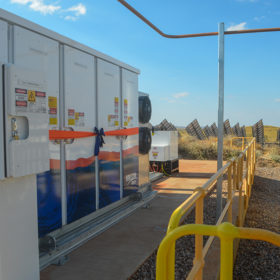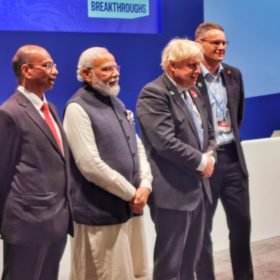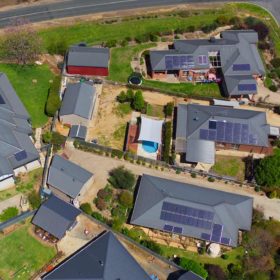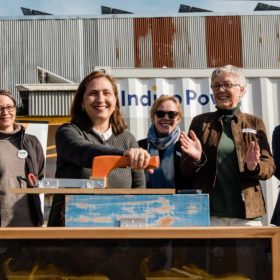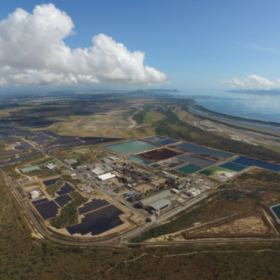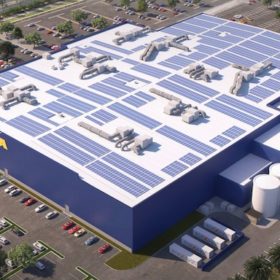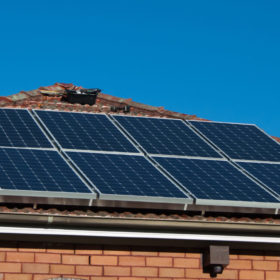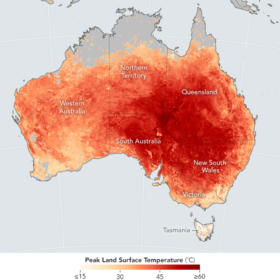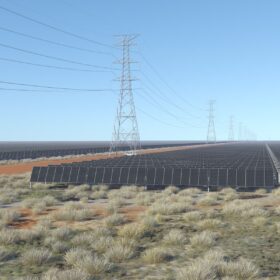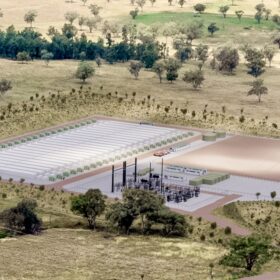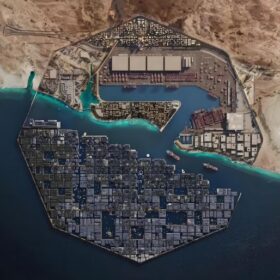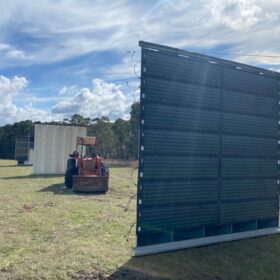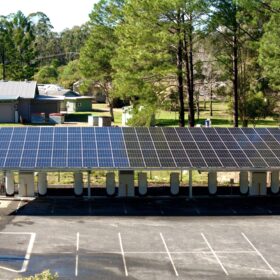Australia’s hottest town now has a battery to store its excess solar
The town of Marble Bar in Western Australia’s remote East Pilbara region is famed for at one time recording 100 consecutive days of temperatures exceeding 37 degrees Celsius. So it’s no wonder the town’s residents have excess solar and nowhere to put it. That is, until now, thanks to the installation of a battery energy storage system beside the town’s centralised solar farm.
Melbourne could meet 74% of its electricity needs with solar
Buildings in the City of Melbourne could provide 74% of their own electricity needs if solar technology is fully integrated into roofs, walls and windows, new research from the ARC Centre of Excellence in Exciton Science has found.
UK, Indian authorities launch plan for transnational solar super-grid
The International Solar Alliance and the U.K. authorities are leading a global super-grid program that seeks to connect 140 countries to round-the-clock renewable power.
Australians have now installed more than three million rooftop solar systems
After another year of record rooftop solar installations, and despite Covid-19 related lockdowns and federal political ineptitude on a level comparable to self-sabotage, Australia has soared past the three million mark and the numbers are only accelerating.
Communities step up when the Coalition won’t
Embarrassing Australia on the world stage is one of Prime Minister Scott Morrison’s favourite marketing ploys. But while the federal government continues to fail its constituents, particularly those in rural communities, those rural communities themselves are taking the energy transition into their own hands, along with the ownership of their own solar generation.
CEFC millions help pave the clean-hydrogen road to a green-zinc supply chain
It all started with Sun Metals 124 MWac solar farm. Once at risk of having its exports curtailed to zero, its owners have now been funded by three Australian government agencies to seed demand for North Queensland’s green hydrogen.
COP26 this! A fast, simple, Australia-tested solution to climate change
EleXsys Energy’s technology enables the controlled flow of excess energy from distributed rooftop-solar generators — think large C&I organisations and microgrid-united regional townships— to help stabilise global grids as they increasingly transition to renewables. The world could feel the positives of mass transition to solar within five years.
Piling on rooftop solar adds value to Wangaratta businesses
Across Australia businesses understand the many pluses of running on renewable energy. The Sustainable Australia Fund helps them achieve multiple business ambitions by offering flexible finance for solar, battery storage and energy efficiency measures.
PV system design for low-cost hot water production
Developed by Spanish scientists, the proposed system design is said to be able to achieve water temperatures above 70 degrees Celsius and to cover around 85% of the annual sanitary hot water consumption of a household with six people.
UNSW Exclusive: Heated climate scenarios will adversely affect Australia’s PV generation capacity
Yes, Australia is blessed with an incredible solar resource, but it will be diminished and returns localised by global warming.
